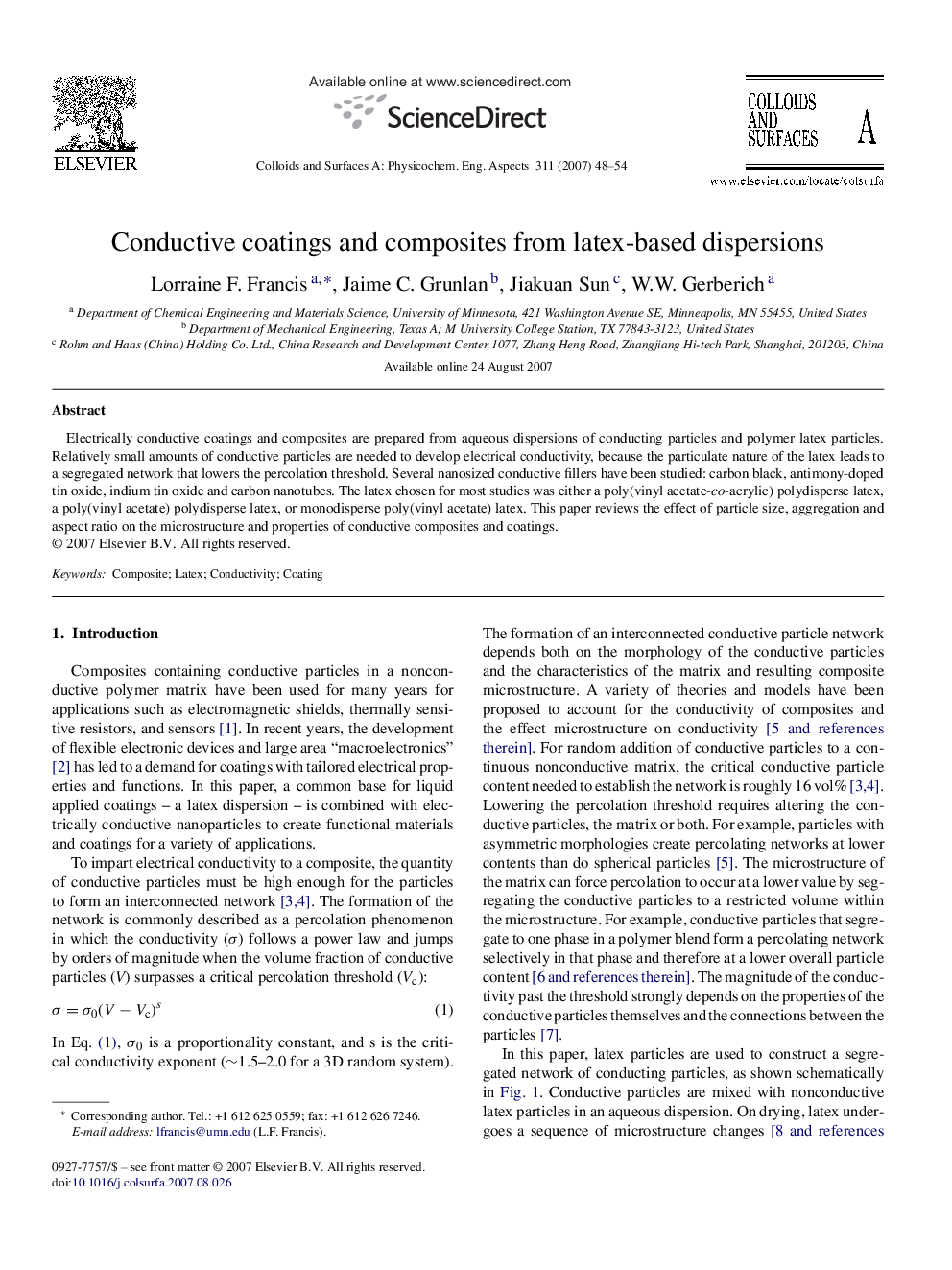| Article ID | Journal | Published Year | Pages | File Type |
|---|---|---|---|---|
| 597186 | Colloids and Surfaces A: Physicochemical and Engineering Aspects | 2007 | 7 Pages |
Abstract
Electrically conductive coatings and composites are prepared from aqueous dispersions of conducting particles and polymer latex particles. Relatively small amounts of conductive particles are needed to develop electrical conductivity, because the particulate nature of the latex leads to a segregated network that lowers the percolation threshold. Several nanosized conductive fillers have been studied: carbon black, antimony-doped tin oxide, indium tin oxide and carbon nanotubes. The latex chosen for most studies was either a poly(vinyl acetate-co-acrylic) polydisperse latex, a poly(vinyl acetate) polydisperse latex, or monodisperse poly(vinyl acetate) latex. This paper reviews the effect of particle size, aggregation and aspect ratio on the microstructure and properties of conductive composites and coatings.
Keywords
Related Topics
Physical Sciences and Engineering
Chemical Engineering
Colloid and Surface Chemistry
Authors
Lorraine F. Francis, Jaime C. Grunlan, Jiakuan Sun, W.W. Gerberich,
